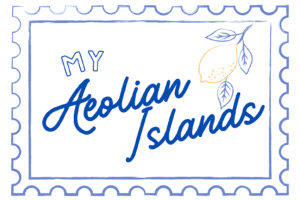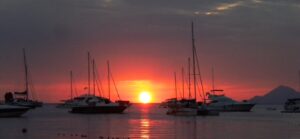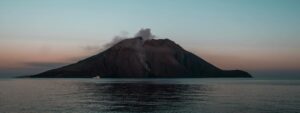Vulcano is the Aeolian archipelago’s wild child, famous for its sulfur baths, black-sand beaches, and the unforgettable walk to its smoking crater. Don’t let the strong smell stop you, if you stay long enough, it becomes part of the island’s charm.
In this article
The Aeolian island that breathes
The first thing you notice about Vulcano isn’t the view. It’s the smell: thick, sharp, unmistakable. The air carries the scent of sulfur and salt, a mix of elements that instantly reminds you this island is alive. As the ferry approaches, plumes of steam rise from the rocks near the port, curling into the blue sky like a dragon’s breath.
Vulcano is the first island you reach from Sicily, the southern gateway to the Aeolian archipelago. For centuries, sailors have watched its smoke and wondered what gods might live here. The Greeks believed this was the forge of Hephaestus, god of fire and craftsmanship, where molten metal was hammered into weapons for heroes, such as Achille’s shield. Even now, as you walk its black-sand paths and hear the hiss of steam escaping from the ground, it’s easy to daydream those stories might have some truth.
The island is small enough to know by heart after a few days, yet complex enough to keep surprising you. Its energy shifts depending on where you are: near Porto di Levante, the air hums with heat and human activity; at the beaches, the wind cools the lava stones underfoot; in the south near Gelso, the silence feels almost sacred.
Vulcano isn’t the prettiest of the Aeolians, nor the easiest to love at first sight. But if you let it, it teaches you to see beauty differently, not polished and perfect, but raw and elemental. This is the island of contrasts: fire and sea, roughness and rest, destruction and renewal. And once it gets under your skin, you’ll carry it with you long after the sulfur scent fades.
Getting to Vulcano
As your ferry leaves the Sicilian coast, Vulcano is the first (and closest) island you’ll reach. Even from a distance, you can sometimes see the thin white trail of smoke rising from its crater. It’s the Aeolian welcome sign, a promise of adventure, a warning, or both 😉
Most travelers begin their journey in Milazzo, the main departure port in northern Sicily. From here, hydrofoils (aliscafi) run several times a day, taking around 45 to 60 minutes to reach Vulcano. Ferries are slower but cheaper, a good choice if you’re traveling with a car or simply want to watch the sea roll by. In summer, there are also direct routes from Messina, Palermo, and Naples, the latter an overnight trip.
All boats arrive at Porto di Levante, the island’s small but lively main port. The moment you step off, you’ll feel the heat underfoot: the ground here is warm, powered by the same geothermal heart that shapes everything on Vulcano. On one side, you’ll see the famous mud baths; on the other, the black curve of Spiaggia Sabbie Nere stretching toward the horizon. And in between: the slow rhythm of island life, scooters buzzing, fishermen unloading crates of fish, sunburned travelers (many more that you might think!) heading to their hotels on foot.
If you’re arriving from another Aeolian island, Vulcano is also easy to reach. Lipari is just a 10-minute hop away, with frequent ferries connecting the two all day long. It’s the perfect day-trip distance, though most visitors soon realize one day isn’t enough to understand any of the islands.
Getting around Vulcano: Small island, big character
Vulcano may look small on the map, but once you start exploring, you’ll realize it’s a world of its own, a patchwork of lava flows, pine forests, black-sand beaches, and silent hills that all change with the light. The island measures only about 8 kilometers from north to south, yet every stretch feels different.
The main hub, Porto di Levante, is where you’ll arrive and likely stay. From here, many of the island’s highlights, the crater, the mud baths, the beach, are within walking distance. The roads are narrow but manageable. Just bring water, a hat, and patience: the midday sun here shows no mercy.
If you want to explore beyond the port, renting a scooter or quad is the Aeolian way. You’ll find several small rental shops near the harbor, and within minutes you can be cruising toward the island’s quieter southern half. You’ll pass abandoned farms, vineyards, and the occasional goat perched on a stone wall, watching you go by.
Taxis and small buses also run between key points, but they’re infrequent and depend heavily on the season. On Vulcano, schedules are more like suggestions, so if you’re in a hurry, rent your own wheels.
The other, most magical way to move here is by boat. From Porto di Levante, you can rent small motorboats (no license needed for short trips) or join a group excursion that circles the island. Seeing Vulcano from the water changes everything. It’s the best way to visit places you can’t reach by land, like the Grotta del Cavallo or the Piscina di Venere, where the water glows unbelievably turquoise.
Local tip: In July and August, traffic on the island can feel chaotic, a mix of scooters, quads, and pedestrians all sharing the same narrow lanes.
What to see & do on Vulcano
Vulcano may be small, but it’s packed with life. Here are my few cannot-miss:
1. Climb the Gran Cratere
If there’s one thing you do on Vulcano, let it be this. The Gran Cratere, or Fossa di Vulcano, is the beating heart of the island, a colossal bowl of yellow sulfur, red ash, and rising steam that feels almost unearthly.
The path begins just outside Porto di Levante. Early in the morning, when the air is still cool, you’ll find a handful of hikers making their way up the dusty trail. The walk takes about 45 minutes to an hour, climbing steadily but never too steeply. Every few steps, the landscape changes and you can smell the sulfur before you see the smoke.
As you reach the rim, the view opens up. The crater is large, almost a kilometer across, and from its edge you can see all the way to Lipari, Salina, and on clear days, even Stromboli puffing gently on the horizon. The ground underfoot is warm, sometimes hot, and from cracks in the earth, white vapors hiss and swirl. This is no dead volcano, my friends, it’s very much alive.
If you walk carefully around the rim (it takes about an hour), you’ll notice how the colors shift with every step: yellow sulfur crystals glinting in the sun, streaks of red and violet ash, the occasional wisp of gas escaping from the earth. It’s like standing on another planet. Some travelers linger here for hours, eating sandwiches on the edge.
When to go: Early morning or late afternoon is best, cooler, quieter, and the light turns the crater gold. Midday climbs are possible but brutal under the sun.
What to bring: Water, hat, solid shoes, and respect, fumaroles release gases that can be dangerous if inhaled too long. Stay upwind and don’t venture into restricted zones.

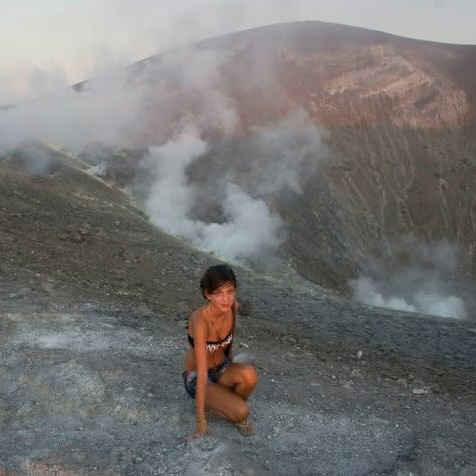
2. Bathe in the sulfur mud (Fanghi di Vulcano)
If Vulcano has a legend that everyone’s heard, it’s the mud baths, the Fanghi di Vulcano. For decades, travellers have come here to cover themselves in gray volcanic clay, bake under the sun, and rinse off in the sulfur-sea, a ritual as old as tourism itself in the Aeolian Islands, part cure, part curiosity, part dare.
The spot sits right by the port, just a few steps from where the ferries dock. You can’t miss it: a shallow pool of milky-gray water framed by steam and the unmistakable scent of sulfur. Back in the day, this was the beating heart of the island’s identity. Travellers from all over Europe would step off the hydrofoil, drop their bags, and wade straight in. The mud, rich in minerals and geothermal energy, was said to heal everything from joint pain to skin issues. Whether or not it really worked didn’t matter; the ritual itself did.
Mud baths at Vulcano
In the past years the bath area was closed, but as of 1 June 2025 the “Pozza dei Fanghi” has officially reopened to the public after safety works and monitoring. Visitors pay a small entry fee (5-10 euros) and follow the rules: a required consent form, time-limited access, restrictions for people with respiratory or blood-pressure issues, and a strictly controlled environment.
The ground is hot beneath your feet, the air thick with that eggy smell that never quite leaves your clothes. Everyone looks crazy: gray, slippery, laughing in the sun as the mud cracks. Then you run into the sea, where the water bubbles gently washes you.
Tip: Bring your bathing suit, antislip sandals, towel and bottle of water. After the mud, apply a good moisturizer, the minerals leave your skin feeling fresh but slightly tight.
My takeaway? Strange, healing, a little uncomfortable, but deeply memorable. You can’t miss them when in Vulcano.
3. Relax at Sabbie Nere & Spiaggia delle Acque Calde
After the heat of the crater and the sting of the sulfur baths, the shore of Spiaggia Sabbie Nere and Spiaggia delle Acque Calde offers the island’s gentlest reward. The two beaches curve side by side along the western edge of Porto di Levante, one famous for its black volcanic sand, the other for the bubbles rising straight from the earth beneath the sea. Together, they form one of the most surreal swimming spots in the Aeolian Islands.
Spiaggia Sabbie Nere, the “Black Sands”, is Vulcano’s most iconic beach. From the port, it’s just a ten-minute walk along the coastal path. The sand here isn’t really sand at all, but finely ground volcanic rock, warm and velvety underfoot, shimmering with tiny flecks of silver and obsidian.
The beach sits inside a natural bay, sheltered from most winds, making it perfect for long, lazy swims. The seabed slopes gently, and just offshore, you can still feel geothermal warmth in the shallows.
A few steps further, the sand gives way to the hot-water beach, Spiaggia Delle Acque calde, where the island exhales directly into the sea. Beneath the surface, fumaroles vent streams of heat that escape as tiny, champagne-like bubbles, the so-called “geyser zone.” The closer you wade to the cliffs, the warmer the water becomes.
Tip: Don’t wear silver jewelry, the sulfur will darken it, and avoid getting too close to the geyser, the temperature can rise suddenly.
At sunset, the beach faces west toward Filicudi and Alicudi, and the sky turns molten gold. The dark sand glows like embers, the crater behind you steams gently, and for a moment the whole island feels like a living painting.
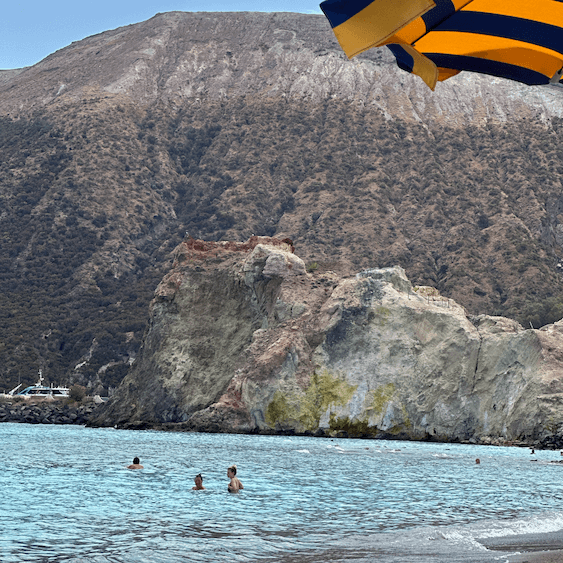

4. Escape to Gelso
Tucked away on the southern tip of Vulcano, this tiny hamlet feels a world apart from the sulfur baths and the chatter of the port. Getting there is part of the experience: a winding 10-kilometre ride through eucalyptus groves, old vineyards, and stretches of lava rock that shimmer in the heat.
Here, a few scattered houses, a small church with whitewashed walls, and a single lighthouse, the Faro di Gelso, watching over the channel between Vulcano and Milazzo. On clear days you can see Etna rising in the distance.
The beaches around Gelso are some of the island’s most beautiful and least known. Spiaggia dell’Asino, the “Donkey Beach”, sits in a quiet cove of dark sand framed by cliffs. A small beach bar serves grilled fish, granita, and cold beer under bamboo shades. The walk down is steep but worth it: the sea here is incredibly clear.
For lunch or dinner, stop at Ristorante da Piera or Gelso Nero, both perched above the water with terraces overlooking the sea. Order whatever fish was caught that morning, a simple salad with Aeolian capers, and a glass of chilled Malvasia delle Lipari.
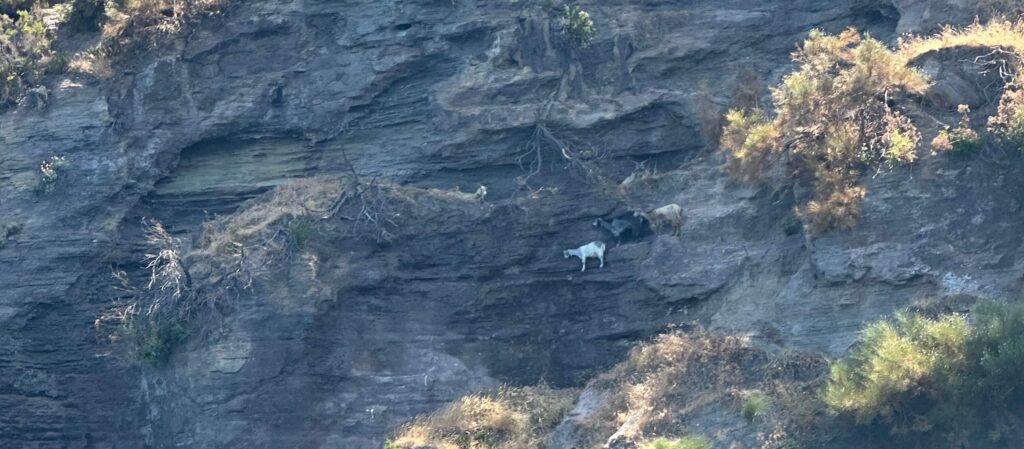
5. Discover Vulcano by sea
As with each of the Aeolian Islands, from land, you only ever see fragments, the crater, the port, the beaches. But from the sea, the island becomes whole. You begin to understand why the Aeolians are best explored on the water, they were, after all, made by it.
You can join one of the daily boat excursions that circle the island, or rent a small motorboat for the day (no license required for small engines). Both leave from Porto di Levante, and both are worth every minute.
The route usually moves clockwise, first passing Vulcanello, the youngest part of the island. Once a separate islet, it fused with Vulcano centuries ago after a series of eruptions. The cliffs here are carved into wild, molten shapes, with hidden coves that glow red in the morning light. One of the most striking sights is the Valle dei Mostri, the “Valley of Monsters,” where lava formations resemble faces and creatures frozen in stone. From the sea, they look even more surreal.
A little further along, you’ll reach the Grotta del Cavallo, the “Cave of the Horse.” The entrance is a wide arch in the cliff, leading into a vast, echoing chamber where the sound of the waves becomes music. Locals say it’s named after the echo that once resembled a neighing horse.
Getting to Venus Pool
Just nearby lies the Piscina di Venere, or “Venus Pool”, a sheltered lagoon of shimmering turquoise water surrounded by dark volcanic rock. Legend says that anyone who bathes here gains renewed beauty and energy. True or not, I never resist the temptation.
Tip: Arrive before noon if you can. The light enters the Venus Pool at just the right angle, turning the water almost electric blue.
As you round the southern tip near Gelso, the island softens again. The cliffs drop into gentle slopes dotted with wild olive trees. You can see the white lighthouse from the sea, standing solitary above the horizon. Most captains stop here for a swim and a glass of Malvasia.
And then, if you look closely at the cliffs, you might spot movement, a line of goats balancing impossibly along the volcanic walls. They’re famous on Vulcano, known for climbing the sheer rock faces that plunge straight into the sea. These aren’t ordinary goats: they graze on wild herbs kissed by sea spray, and the salt they consume gives their milk a distinct flavor. The ricotta made from it, is one of the treasures of the island.
Completing the loop, the boat returns north toward the crater, its summit now glowing in the afternoon sun. This is the perfect way to finish the tour.
Where to stay on Vulcano
Vulcano may be small, but where you stay shapes how you experience it. You can cross the island in twenty minutes, yet each area feels like a different world.
Porto di Levante: if you want convenience
If it’s your first time on Vulcano, the Porto di Levante area is the natural choice. Everything happens here: It’s ideal if you want to be in the middle of things, especially if you’re hopping between islands.
There are plenty of small B&Bs, family-run hotels, and guesthouses with terraces overlooking the sea. You’ll find places like Hotel Orsa Maggiore or Les Sable Noir simple and comfortable.
Vulcanello: For views and a touch of comfort
A short walk north of the port, the area around Vulcanello offers views of Lipari and the whole archipelago. This is where you’ll find the island’s most luxurious option: Therasia Resort Sea & Spa, a five-star retreat perched dramatically above the cliffs. Its infinity pool seems to spill straight into the sea, and the sunsets here are cinematic. Even if you don’t stay overnight, it’s worth coming for a drink at dusk.
Around Vulcanello you’ll also find a handful of villas and small resorts tucked among olive trees, perfect for couples or families wanting comfort without the port’s bustle.
Gelso: For silence and quietness
At Gelso, a few agriturismi and holiday houses dot the hillsides, surrounded by eucalyptus and wild fennel. Electricity flickers occasionally, roosters wake you before dawn, and the sea is your alarm clock.
It’s perfect for those who want to disappear for a few days. There are no supermarkets nearby, no nightlife, just the sound of the wind through the grass and the lighthouse blinking rhythmically in the distance. When you lie in bed at night, you can feel the deep quiet of the island settle around you.
Tip: In summer, book early, Vulcano’s accommodations fill up fast, especially the few with air conditioning and sea views. If you come in spring or autumn, you’ll have the island almost to yourself, and prices drop by half.
FAQ: Everything You Need to Know About Visiting Vulcano
How long should I stay on Vulcano?
You can technically visit on a day trip from Lipari or Milazzo, but it’s worth staying at least two or three nights.
Is it safe to climb the crater?
Yes. Authorities monitor gas levels daily and close the path if emissions rise. Avoid fumaroles and bring water.
Are the mud baths open again?
Yes, as of June 2025, the Pozza dei Fanghi has officially reopened with safety rules and controlled access.
When is the best time to visit?
From May to mid-October. June and September are perfect, warm, sunny, and calmer.
Does the sulfur smell really stay on you?
A little, lemon juice or vinegar mixed with water removes it instantly. Locals swear by it.
Is Vulcano good for families?
Yes. The beaches are shallow and safe; just avoid the hot spots near fumaroles.
Can I bring my car?
You can, but it’s rarely needed. The island is small, and scooters are easy to rent.
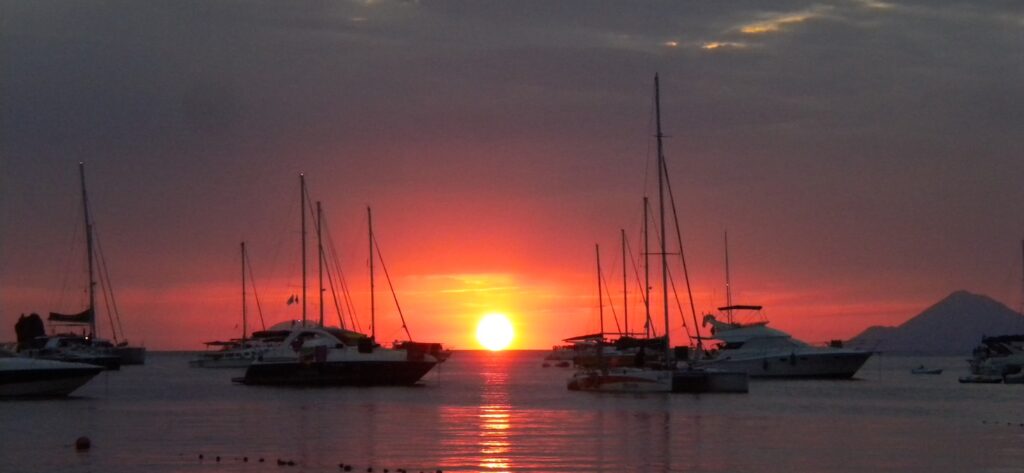
The soul of Vulcano
There are places that impress you, and others that stick on you. Vulcano belongs to the second kind. It doesn’t try to charm you. It doesn’t ask to be liked. It simply exists, steaming and puffing unapologetically.
What makes Vulcano unforgettable isn’t just the volcano itself, or the beaches, or the mud baths. It’s the way those things coexist. It’s like the island is reminding you that beauty doesn’t have to be gentle. It can hiss and burn and still be appreciated.
You come to Vulcano curious. You leave transformed: a little sunburned, a little stinkier, and somehow more connected with the natural word around you.
